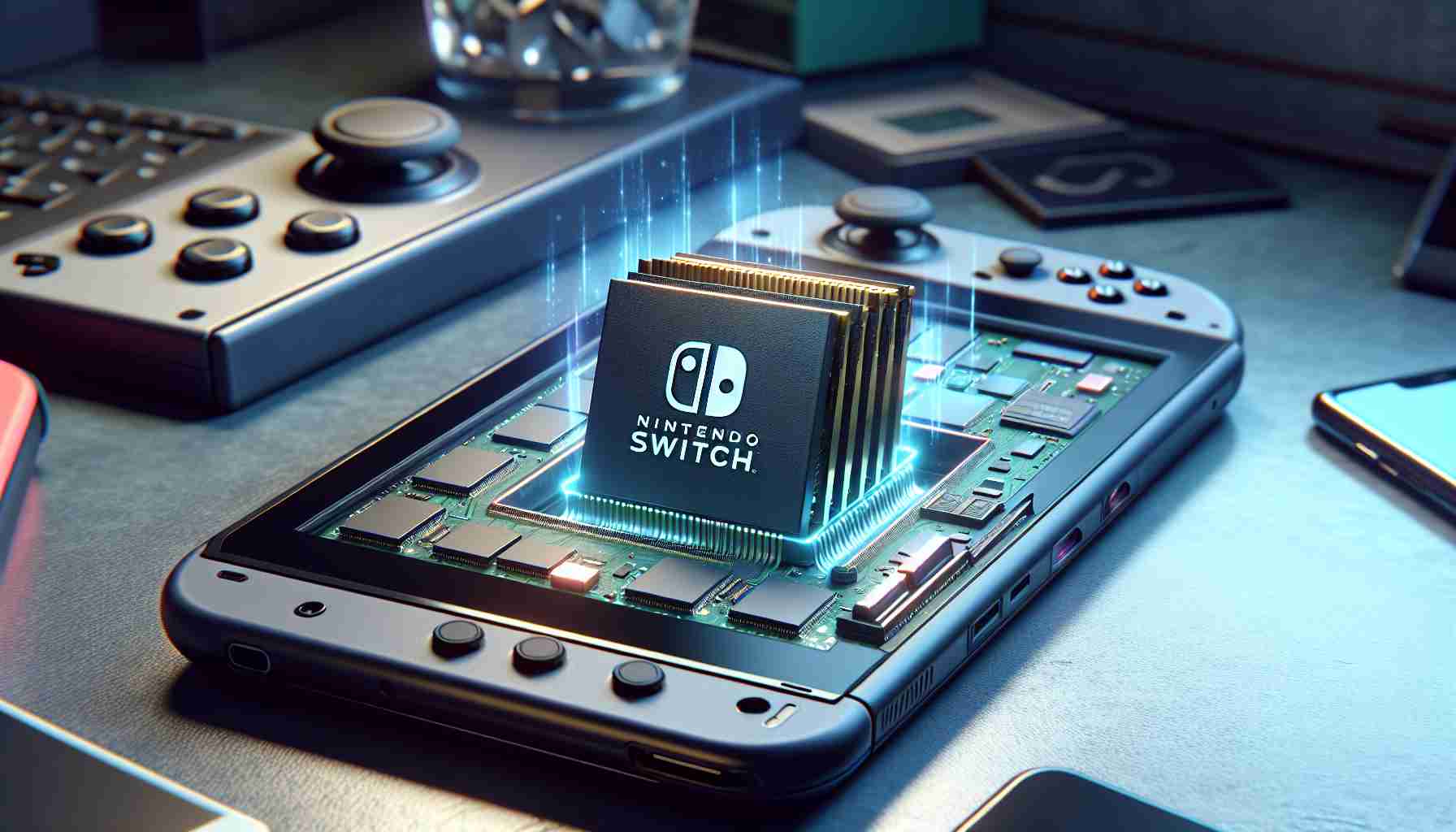A Shift to Advanced Storage Solutions for Nintendo’s Next Console
A significant advancement in the Nintendo gaming experience may be on the horizon, with evidence suggesting that the anticipated successor to the Nintendo Switch could be harnessing the power of advanced Samsung memory technology. This revelation comes from a video shared by Doctre81 on YouTube, which highlights findings related to the professional experience of a former high-ranking Samsung employee—sharp-eyed viewers discovered the profile on LinkedIn.
The individual’s impressive resume boasted leadership in the crafting of a NAND Flash Controller, specifically for a new Nintendo game card. Furthermore, their involvement in the creation of a Secure eMMC Card, utilizing Samsung’s 5th generation V-NAND Flash, was proudly noted. These details suggest a partnership aiming to push the boundaries of security and memory performance for Nintendo hardware.
Increased Speed and Reliability Mark the Step Forward
Nintendo’s choice to implement Samsung’s 5th generation V-NAND in its upcoming console confirms a commitment to delivering faster and more stable performance. With transfer rates that could reach 1.4 GB/s, gamers can expect a seamless and superior experience compared to the original Switch. Although this technology isn’t the latest iteration from Samsung, it represents a significant leap over the current console’s capabilities.
Groundbreaking Graphics on the Gaming Horizon
It is not only the storage that will see an upgrade. The Nintendo Switch 2 is rumored to feature NVIDIA’s T239 chip, a considerable improvement over the Tegra X1 chip found in the existing model. The new chip is anticipated to support advanced graphics features including NVIDIA DLSS upscaling and Ray Reconstruction, pointing to a future where Nintendo may offer the most advanced ray tracing capabilities in the gaming console market.
Exploring the Relevance of Enhanced Memory Technology for Nintendo’s Future Console
The enhanced memory technology that could be deployed in Nintendo’s next console has far-reaching implications for the future of gaming and the company’s place within it. The adoption of Samsung’s 5th generation V-NAND Flash by Nintendo is poised to deliver faster read and write speeds, which translates to quicker load times for players, and could potentially reduce game download times significantly when compared to the current Switch hardware.
Key Points of Discussion Around Advanced Memory in Gaming Consoles
1. Security Enhancements: The Secure eMMC card integration will likely provide more robust protection against piracy, a longstanding issue in the gaming industry.
2. Memory Performance: The improved memory speeds can enhance overall system fluidity, and possibly revolutionize how games are developed for and experienced on Nintendo platforms.
3. Game Development: With more powerful storage options, developers might have greater flexibility to create more complex and visually stunning games.
Advantages and Disadvantages of the Memory Upgrade
Advantages:
– **Enhanced Performance:** The primary benefit is the expected increase in data transfer rates, leading to faster game boot times and more responsive gameplay.
– **Improved Graphics:** Coupled with the rumored NVIDIA T239 chip, the advanced memory can facilitate cutting-edge graphics technologies like ray tracing and DLSS.
– **Reduction in Load Times:** Gamers will likely appreciate the reduced loading times that come with better memory technology.
– **Game Development Freedom:** Developers may take advantage of this technology to push the limits of game design on a Nintendo platform.
Disadvantages:
– **Cost Implications:** Often, newer technology comes with a higher price tag, which could make the system more expensive for consumers and potentially impact sales.
– **Obsolescence Risk:** Given the rapid pace of memory technology development, there’s a possibility that even 5th generation V-NAND flash may become outdated in a relatively short time.
– **Compatibility Concerns:** The new system must balance forward-thinking technology while ensuring backward compatibility with the existing Switch game library.
Challenges and Controversies
Introducing such technology brings its set of challenges. The transition from the current Switch architecture to a more advanced set-up might raise compatibility or performance issues. Balancing the costs of new technology while keeping the console at a competitive price point is another challenge. Additionally, the move might incite some controversy among fans and developers, especially if it leads to fragmentation in the gaming community or alienates those with a preference for physical media.
If you wish to follow the developments in gaming technology and consoles, you might find the following resources informative:
– Nintendo Official Website
– Samsung Official Website
– NVIDIA Official Website
It is worth noting, however, that while this information is an educated projection around the topic, all details should be taken as speculative until confirmed by official announcements from Nintendo and its technology partners.
The source of the article is from the blog coletivometranca.com.br
